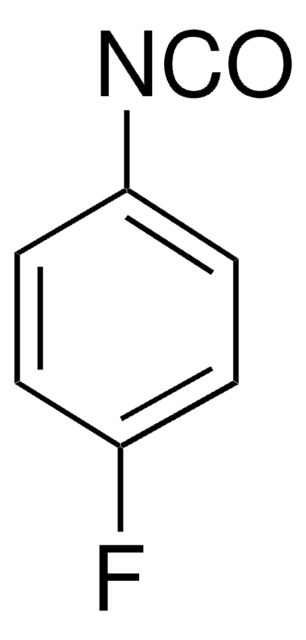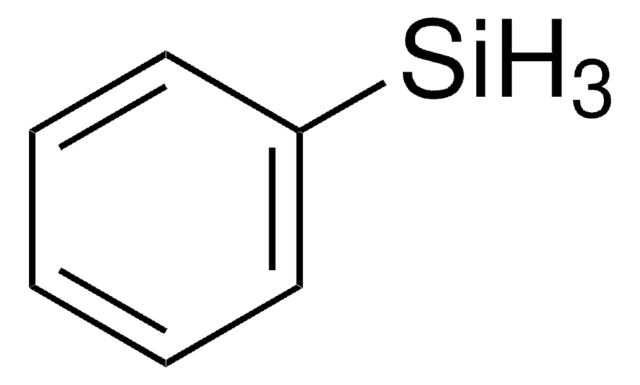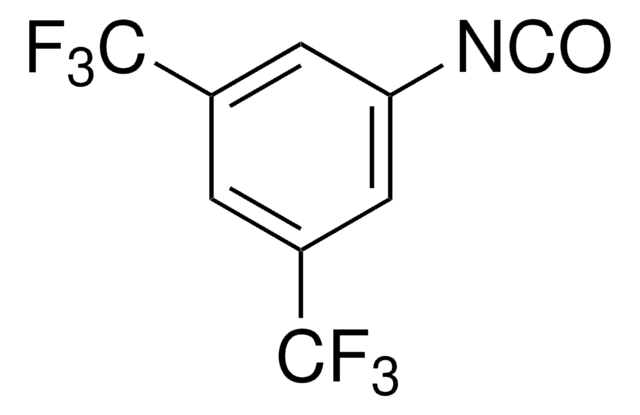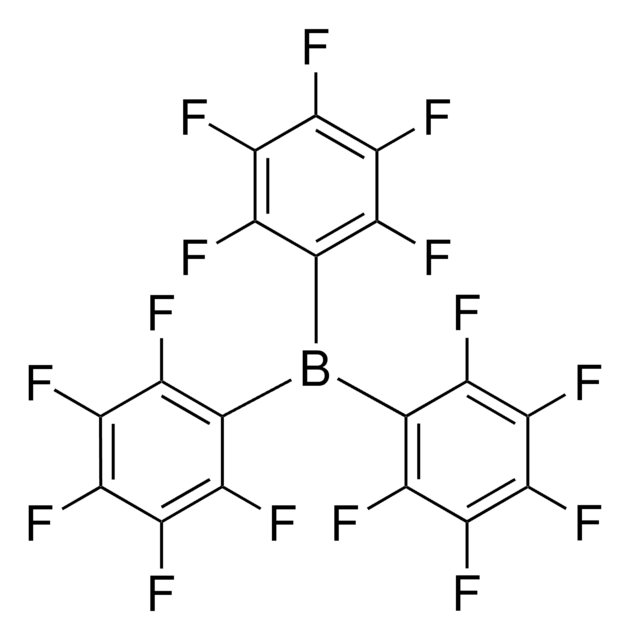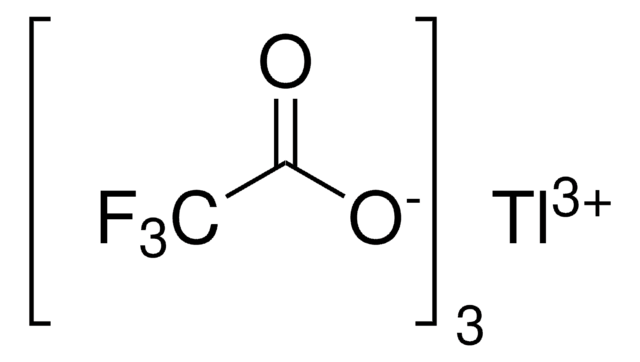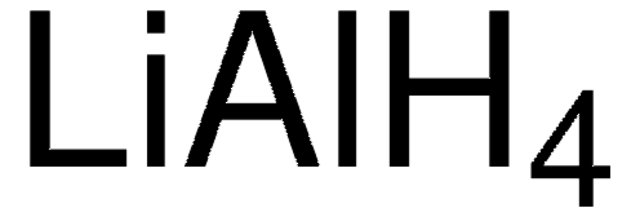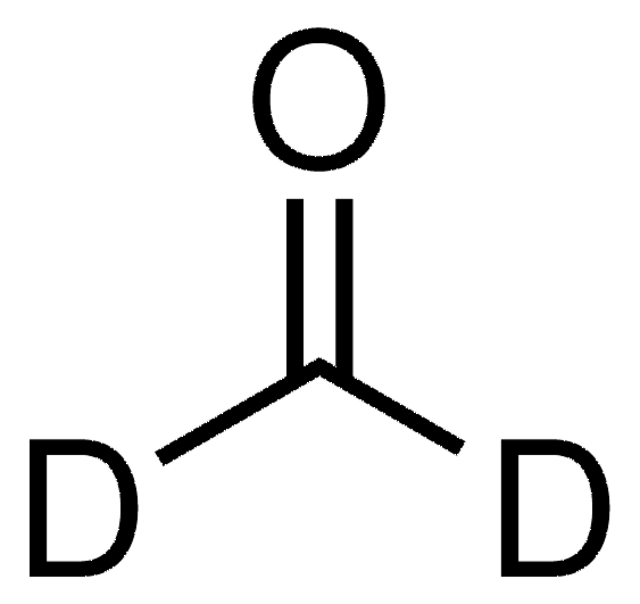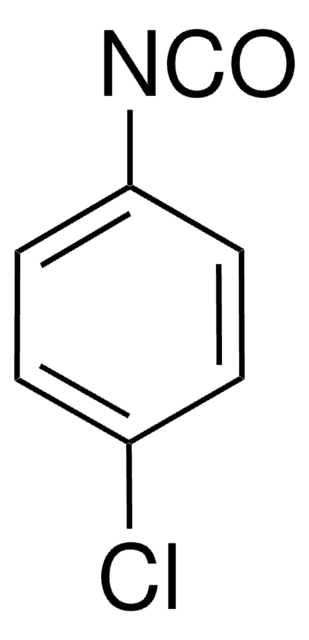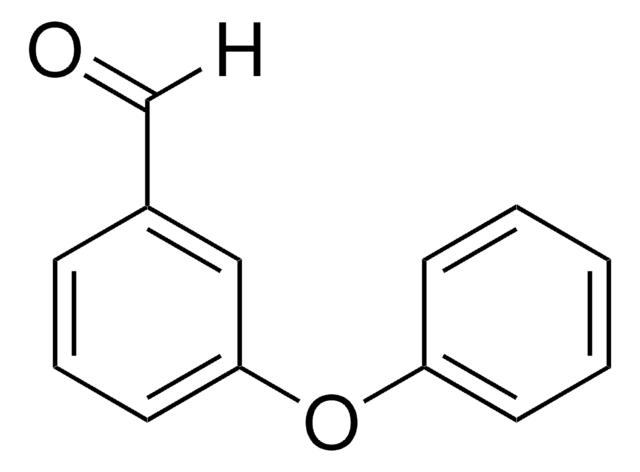About This Item
Recommended Products
Quality Level
Assay
99%
form
liquid
refractive index
n20/D 1.490 (lit.)
bp
42 °C/6 mmHg (lit.)
density
1.309 g/mL at 25 °C (lit.)
functional group
fluoro
isocyanate
SMILES string
Fc1ccc(N=C=O)c(F)c1
InChI
1S/C7H3F2NO/c8-5-1-2-7(10-4-11)6(9)3-5/h1-3H
InChI key
HNENEALJPWJWJY-UHFFFAOYSA-N
Looking for similar products? Visit Product Comparison Guide
Application
- in the synthesis of N,N-disubstituted S,N′-diarylisothioureas
- as blocking reagent, to modify the hydroxyl, amine and epoxide functional groups of cured MY720/DDS epoxy thin films
Signal Word
Danger
Hazard Statements
Precautionary Statements
Hazard Classifications
Acute Tox. 4 Dermal - Acute Tox. 4 Inhalation - Acute Tox. 4 Oral - Eye Irrit. 2 - Flam. Liq. 3 - Resp. Sens. 1 - Skin Irrit. 2 - Skin Sens. 1 - STOT SE 3
Target Organs
Respiratory system
Storage Class Code
3 - Flammable liquids
WGK
WGK 3
Flash Point(F)
131.0 °F - closed cup
Flash Point(C)
55 °C - closed cup
Personal Protective Equipment
Regulatory Information
Choose from one of the most recent versions:
Already Own This Product?
Find documentation for the products that you have recently purchased in the Document Library.
Our team of scientists has experience in all areas of research including Life Science, Material Science, Chemical Synthesis, Chromatography, Analytical and many others.
Contact Technical Service